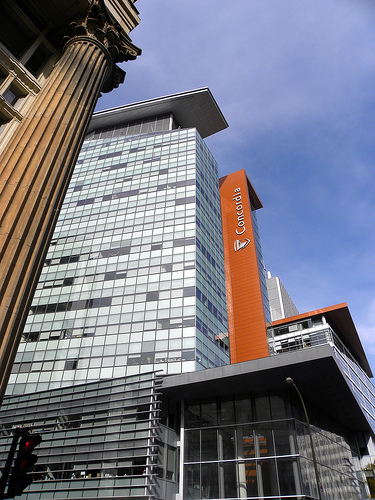We aren’t an old university, though our presence in the city now appears ubiquitous. Prior to 1974, Concordia as we know it did not exist. Yet, our origins, obscured by time, run deep, and nowhere is this better shown than when one examines our close historical affinity (indeed, our origins) to the YMCA.
Now known primarily as a place for physical recreation, the Young Men’s Christian Association originally began, and still is in many parts of the world, as a holistic organization for the installment of wholesome character. But it was also the parent organization from which one-half of our university sprang from.
Sir George Williams, the founder of the YMCA and whose name now graces our downtown campus, was an English draper who experienced a religious epiphany and decided to create a non-secular organization to combat the immoral distractions of a London wracked by rough social changes and rapid urbanization. From prayer meetings and bible study, the YMCA expanded to provide vocational activities and teachings and, by 1851, the very first YMCA in North America was founded in Montreal.
The YMCA, following its mandate to care for the mind as well as the body, was for the longest time the main provider of vocational studies for Montreal’s adult anglophone community who couldn’t attend school during the day because of work. This educational arm, christened Sir Williams College, was centered on the YMCA building still extant on Stanley street. Prior to the Second World War, Sir Williams College acted as the first university to offer undergraduate credit courses to adults in Canada.
After the war, the college became a university and was granted a charter. By the 1960s the YMCA ceased being used for classes and a proper location, the Hall building, was constructed in its place and various other annexes added on to house its expanding enrollment. Not coincidentally, this was around the same time the university had sufficiently developed its own independent character and means of support to cut all ties with its erstwhile parent organization, the YMCA.
So now you know the surprisingly deep roots of our university. It’s still anybody’s guess, though, if you can use this information the next time you’re negotiating for a discount membership at the Y.
